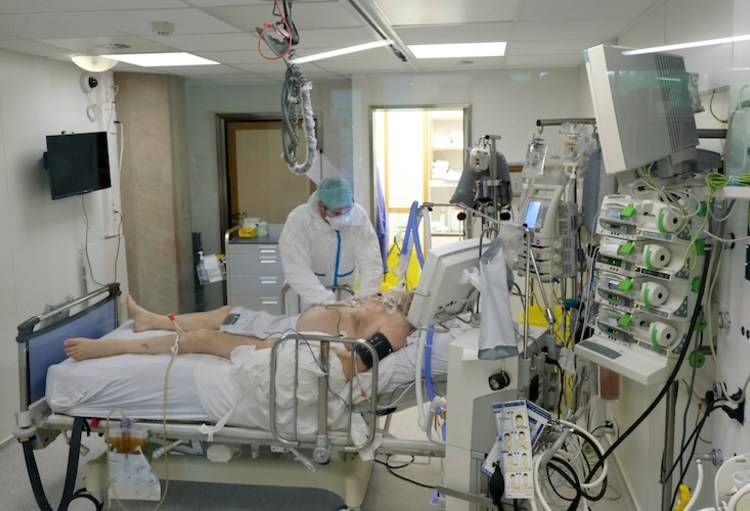
In this article we look at the purpose and function of IMU within a hospital’s framework, shedding light on its importance in patient management. Delve into the depths of this medical acronym and gain insights into how it contributes to the overall well-being of patients.

What is the IMU unit in a hospital?
An Intermediate Care Unit (IMU) in a hospital serves as a vital bridge between traditional hospital wards and the intensive care unit (ICU). Designed to cater to patients with medical conditions that necessitate a higher level of monitoring and care than what a standard ward can provide, the IMU plays a crucial role in the healthcare ecosystem.
Often referred to as a step-down unit or progressive care unit, the IMU is staffed by a specialized team of healthcare professionals trained to manage patients requiring an intermediate level of attention. These patients typically have conditions that are not critical enough to warrant constant ICU-level monitoring and interventions, yet are too complex or unstable to be managed effectively in a general ward.
The IMU offers a range of benefits. For patients, it provides a tailored environment that caters to their specific needs, fostering a smoother transition from critical care to recovery. For healthcare providers, the IMU optimizes resource allocation by ensuring that ICU beds are available for patients with more severe conditions while simultaneously preventing patients from being kept in the ICU longer than necessary.
Within the IMU, patients receive ongoing monitoring, specialized medical attention, and interventions as required. This can include continuous cardiac monitoring, close observation of vital signs, pain management, and support for complex medical conditions. Depending on the hospital’s capabilities, the IMU may also offer services such as specialized respiratory care and post-surgical monitoring.
The IMU’s significance extends beyond medical care. It offers emotional support to patients and their families during a critical phase of recovery. The IMU environment provides a balance between the constant monitoring of an ICU and the relative autonomy of a general ward, allowing patients to regain their strength and confidence while knowing that expert care is readily available.
In essence, the Intermediate Care Unit exemplifies the adaptability and flexibility of modern healthcare. It addresses the diverse needs of patients, optimizes resource utilization, and contributes to a comprehensive patient care journey. As hospitals continue to evolve and refine their care models, the IMU remains a crucial component, embodying the commitment to provide the right level of care at the right time.
Equipment and Technology Used in IMU Units
Here are some key equipment and technologies commonly used in IMU units:
- Cardiac Monitors: Continuous cardiac monitoring is essential in IMUs. Advanced cardiac monitors track heart rate, rhythm, blood pressure, and oxygen saturation, allowing healthcare professionals to closely monitor any changes and intervene promptly if needed.
- Multi-Parameter Monitors: These monitors provide real-time data on various vital signs, including heart rate, blood pressure, oxygen saturation, and temperature. They offer a comprehensive view of the patient’s condition, enabling timely interventions.
- Pulse Oximeters: Pulse oximeters measure the oxygen saturation levels in a patient’s blood. They are non-invasive and help monitor respiratory status, especially in patients with compromised lung function.
- Respiratory Support Equipment: IMUs often have equipment such as mechanical ventilators or non-invasive positive pressure ventilation devices to support patients with respiratory distress.
- Infusion Pumps: Infusion pumps deliver medications, fluids, and nutrients at precise rates. In an IMU, they are crucial for administering medications that require close monitoring and control.
- Bedside Telemetry: Wireless telemetry systems allow continuous monitoring of a patient’s cardiac rhythm, enabling healthcare providers to detect arrhythmias and other cardiac issues in real-time.
- Point-of-Care Testing (POCT) Devices: These portable devices enable quick on-site testing of blood gases, electrolytes, and other critical parameters, providing immediate results for timely decision-making.
- Telemedicine and Telemonitoring Systems: Some IMUs may incorporate telemedicine technology, allowing remote specialists to assess patients’ conditions and provide recommendations without physically being present.
- Portable X-ray and Ultrasound Machines: Having access to portable imaging equipment allows for prompt diagnostic assessments without the need to transport patients to radiology departments.
- Electronic Health Records (EHR) Systems: Digital patient records enable healthcare providers to access and update patient information seamlessly, facilitating communication and continuity of care within the IMU and beyond.
- Fall Prevention Technology: IMUs often implement technologies like bed alarms or motion sensors to prevent patient falls and ensure their safety.
These equipment and technologies, combined with skilled healthcare professionals, create a comprehensive care environment in IMU units. They enable timely interventions, constant monitoring, and personalized care for patients requiring intermediate levels of attention on their path to recovery.
Why Is My Poop Like Cow Patties?
What happened to Dale Robertson’s horse Jubilee?
What does it mean when a lizard poops on you?
What is the meaning of 18 bills in a debut?
What is the most expensive item on TF2?
Are lubber grasshoppers poisonous to dogs?
